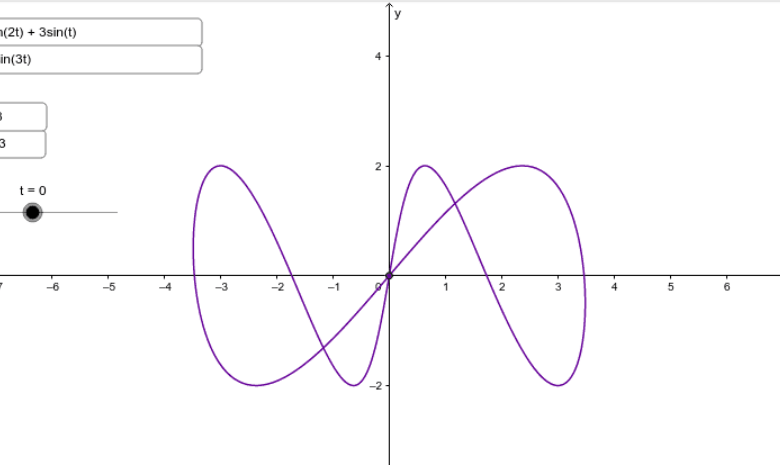Parametric Form Calculator: A Smart Tool for Mathematical Visualization

Understanding Parametric Forms
In mathematics, equations can be represented in various forms. While the Cartesian form expresses variables directly in terms of each other (like y = mx + b), the parametric form introduces an independent parameter—usually denoted as t—to define both x and y (or more variables). This form becomes essential when modeling curves, motions, or objects in space that don’t fit neatly into standard linear or polynomial expressions.
For example, the movement of a particle along a path might be defined as:
- x(t) = 4t + 1
- y(t) = 2t² – 5
These two equations describe the particle’s position in the xy-plane based on the parameter t, typically representing time.
What Is a Parametric Form Calculator?
A parametric form calculator is an intelligent digital tool designed to process and solve equations expressed in parametric form. These calculators allow users to:
- Enter equations with parameters.
- Visualize curves generated by those equations.
- Convert between parametric and Cartesian forms (if possible).
- Evaluate derivatives and slopes.
- Analyze curve behavior across different parameter values.
Such tools are widely used in academic, scientific, and engineering environments to study motion, curves, and geometric relationships.
Why Use a Parametric Form Calculator?
Solving parametric equations manually can be complex and time-consuming. A parametric form calculator:
- Saves time by computing values instantly.
- Improves accuracy by avoiding manual errors.
- Enables visualization, making it easier to understand abstract mathematical behavior.
- Supports learning, offering students and educators a way to explore mathematical relationships interactively.
These advantages make the calculator an essential resource in today’s digital classrooms and research labs.
How It Works
Most parametric form calculators are simple to use. Here’s a general step-by-step outline of how they operate:
- Input Equations: Enter x(t) and y(t) as functions of t.
- Set Range for t: Define the interval (e.g., t = 0 to t = 10) over which the equations will be evaluated.
- Click Calculate or Plot: The tool generates results, which may include values, a table, or a graph.
- Analyze Output: You can inspect the path of motion, coordinates at various t values, and even slopes of tangents.
Some calculators go further and allow differentiation, plotting in 3D (for equations involving z), or exporting results for simulations or animations.
See also: Unlocking Your Potential: Top Educational Paths To Achieve Your Dreams
A Simple Example
Let’s look at a basic case:
- x(t) = cos(t)
- y(t) = sin(t)
- t in [0, 2π]
This set of equations describes a circle. A parametric form calculator will instantly generate the full circular path and may also highlight specific points as t changes. Trying to plot this manually would require calculating multiple points and then estimating the curve—far more tedious and prone to error.
Applications in Real Life
Physics and Engineering
In physics, many types of motion are described parametrically. From the orbit of planets to the trajectory of a projectile, using parametric equations enables clear modeling of how an object’s position changes over time.
Engineers rely on parametric equations to design and test mechanisms such as cams, gears, and robotic arms. Parametric form calculators assist in visualizing and simulating these designs before building prototypes.
Computer Graphics and Animation
Movements in digital animation are often defined using parametric paths. For instance, a character might walk along a curved path defined by:
- x(t) = t
- y(t) = sin(t)
A parametric form calculator helps animators preview motion paths and tweak timing or speed by adjusting the parameter t.
Architecture and Design
Complex curves and surfaces are a staple of modern architecture. Architects and designers use parametric forms to define these shapes and test variations. A calculator provides immediate feedback, helping them refine their designs.
Benefits for Students
For students learning about parametric equations for the first time, the abstract nature can be overwhelming. A parametric form calculator helps them:
- Visualize motion: See how points move along a curve as t changes.
- Learn relationships: Understand how changes in one equation affect the path.
- Practice actively: Test multiple equations quickly to reinforce understanding.
It transforms learning from a static lecture into an interactive and engaging experience.
Types of Parametric Form Calculators
Online Tools
Many websites offer free parametric calculators with graphical capabilities. These are often sufficient for education or general use.
Popular options include:
- Desmos
- GeoGebra
- Symbolab
Mobile Applications
Apps available on iOS and Android allow you to use parametric form calculators on the go. These are great for quick checks, homework help, or studying while commuting.
Professional Software
Tools like MATLAB, Mathematica, and WolframAlpha offer advanced features for research and engineering. These calculators support 3D plotting, symbolic manipulation, and integration with other mathematical systems.
Advanced Features
A good parametric form calculator may also offer:
- 3D Parametric Equations: Define equations involving three variables (x(t), y(t), z(t)) to plot spirals, helices, or surfaces.
- Tangent and Normal Lines: Calculate derivatives to find slopes at particular points on a curve.
- Arc Length and Area: Some calculators can compute geometric properties like the length of a curve or the area under it.
- Conversion Tools: Convert from parametric to Cartesian or polar forms when possible.
Final Thoughts
The parametric form calculator is more than just a mathematical gadget—it’s a bridge between abstract theory and practical application. Whether you’re a student, teacher, engineer, designer, or hobbyist, this tool can simplify complex equations, offer insights into motion and space, and foster creative problem-solving.
As we continue to move into an era dominated by data and digital tools, mastering and utilizing resources like the parametric form calculator will be essential. They not only make mathematics more accessible but also open doors to deeper understanding and innovation across many fields.



